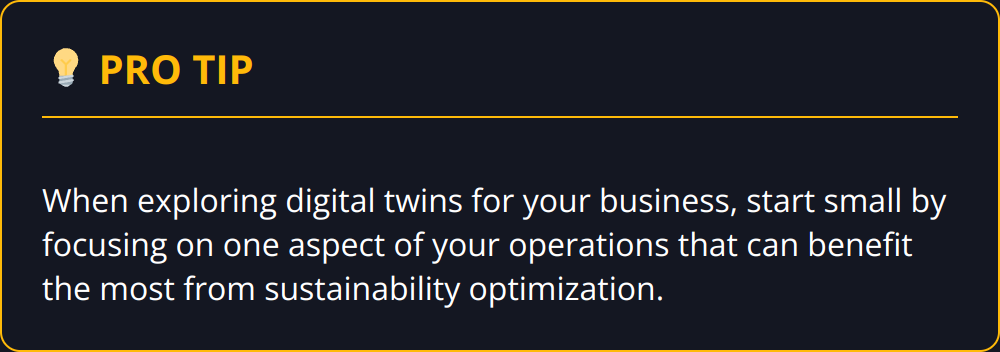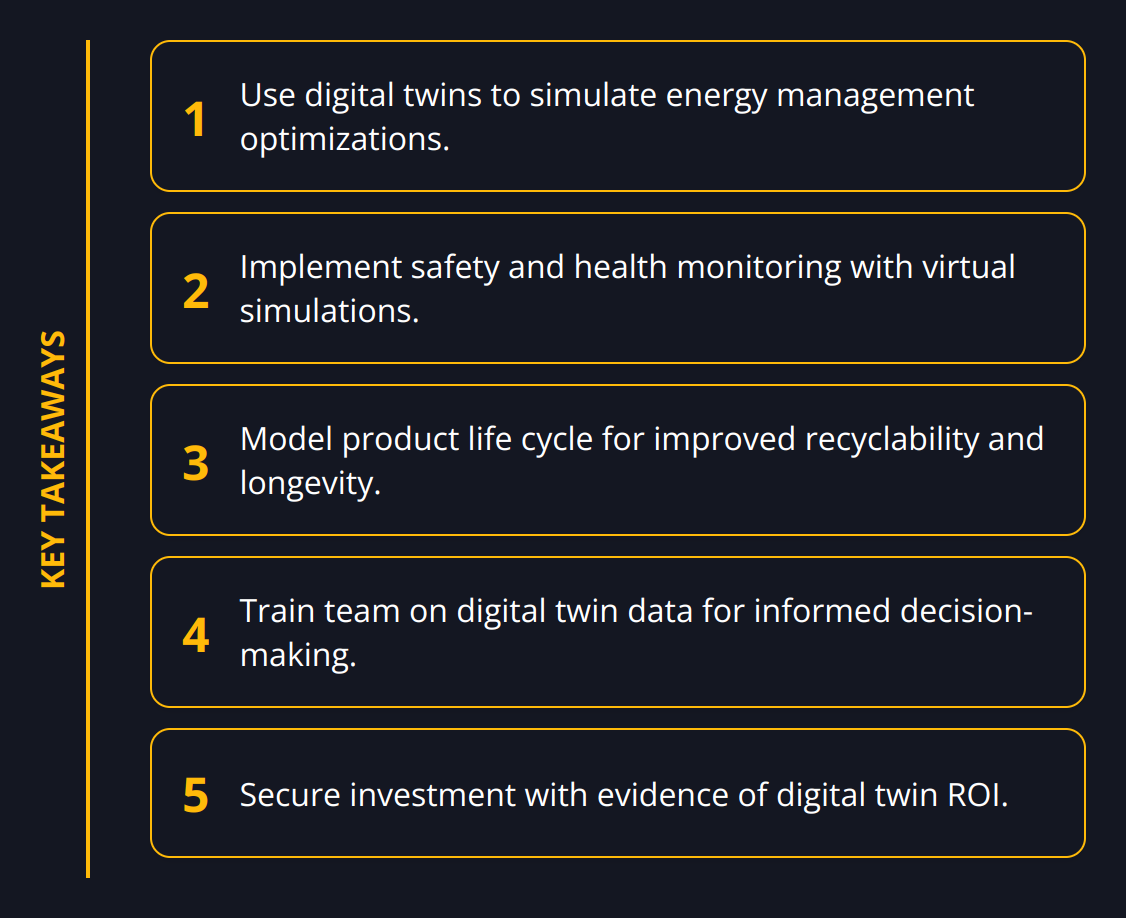We at newroom connect believe in harnessing technology to pave the path for a greener future. Digital twins, a sophisticated form of simulation technology, have emerged as powerful allies in the quest for sustainability within the business sector. By bridging the gap between the virtual and physical worlds, these tools offer a canvas to visualize, plan, and execute sustainable practices effectively. Let’s explore how the adoption of digital twins is reshaping business approaches to sustainability and the tangible benefits they bring to the table.
Driving Sustainable Business with Digital Twins
Digital twins are not just cutting-edge technology; they’re a crucial toolkit for businesses committed to sustainability. Essentially, a digital twin is a dynamic, real-time replica of a physical object, process, or system. This technology lets you simulate and analyze operations in a virtual space, a capability that’s a game-changer for sustainability.
Digital Twins as Sustainability Enablers
Why are digital twins indispensable for sustainable practices? It boils down to their unique ability to provide insights that inform eco-friendly decisions. With digital twins, businesses can model the impacts of their actions before implementation, leading to reduced waste, optimized energy usage, and less resource depletion. They act as a strategic asset in designing products and processes that not only curtail environmental impact but also boost economic performance. For example, a manufacturer could use a digital twin to test different material compositions to find the most sustainable option without the cost of physical prototypes.

Supporting the Sustainability Triad
Digital twins positively impact the three pillars of sustainability: environmental stewardship, social responsibility, and economic viability. Here’s how they make a tangible difference:
-
Environmental Stewardship: Digital twins can precisely model energy consumption, waste production, and resource usage. This allows for scenario analysis on a level that’s virtually impossible in the physical world, leading to significant reductions in carbon footprint.
-
Social Responsibility: By simulating real-world processes, digital twins can help ensure safer working conditions, track the health of assets, and prevent hazardous situations, thereby upholding the social contract with both employees and customers.
-
Economic Viability: These virtual models optimize operational efficiencies, driving cost savings and improving the bottom line while adhering to sustainable practices. A company that masters operational efficiency through digital twins can become more competitive, making sustainability a profitable venture.

Practical Insights for Adoption
To harness the full power of digital twins for sustainability, businesses can:
-
Monitor real-time data to adjust operations for maximum energy efficiency.
-
Visualize the entire lifecycle of a product, identifying areas to improve longevity and recyclability.
-
Test sustainability scenarios and predict outcomes without the costs of trial-and-error in the real world.
In one practical application, a company might track the emissions of their fleet through a digital twin, helping them transition to electric vehicles in an optimal way. Another might use predictive maintenance to reduce downtimes and extend equipment life, which can be understood through our guide on digital twin analytics.
Key Takeaways
To thrive in a world where sustainability is not just preferred but expected, it’s essential for businesses to feasibly integrate sustainable practices. Digital twins offer that feasibility, bringing together improved resource management, safer work environments, and an enhanced bottom line, effectively knitting sustainability into the fabric of modern business strategy. By embracing digital twins, companies can not only achieve their environmental goals but also set a new standard of efficiency and innovation.
Harnessing Digital Twins for Green Results
Digital twins are revolutionizing various industries by driving sustainable, eco-friendly initiatives. Let’s get practical and look at some instances where they have sparked measurable progress.
In the energy sector, digital twins are pivotal in transforming energy management. For instance, Siemens, a global technology powerhouse, has utilized digital twins to optimize the energy output and performance of wind farms. By creating virtual models of turbines, they were able to simulate and predict how real-world factors like weather conditions would impact energy production. This foresight has enabled operators to tweak turbine settings for peak efficiency, reducing unnecessary strain and expanding their lifespan while maximizing green energy yield.

In the realm of manufacturing, increased resource efficiency is a major win. Manufacturers are turning to digital twins to streamline production lines and minimize waste. A notable example involves using digital twins to simulate manufacturing processes, thereby allowing companies to identify inefficiencies and points where energy consumption can be minimized. The impact of this is a leaner, more sustainable production method with a smaller carbon footprint.
Real estate can leverage digital twins for monitoring environmental impacts, as seen in the success story of EcoDomus, a company that specializes in creating digital replicas for buildings. Through their technology, facility managers can visualize the energy consumption patterns of different buildings, make predictions on usage trends, and implement strategies to reduce their carbon footprint. These virtual replicas help enforce environmental regulations and push for higher energy standards across portfolios.

For businesses looking to implement these technologies, consider these crucial steps:
-
Engage with software providers that specialize in creating scalable and precise digital twins.
-
Invest in training for your team to interpret and apply insights from digital twin data.
-
Commit to a continuous feedback loop where digital twin insights drive ever-evolving sustainability benchmarks.
By incorporating digital twins, companies have witnessed notable sustainability gains, such as:
-
Energy reductions by up to 20% in facilities management.
-
Material cost savings from streamlined production processes.
-
Lifecycle extensions of products through optimization and predictive maintenance.
Forward-thinking business leaders recognize the transformative value of digital twins. To delve further into the realm of efficient management through these technologies, consider exploring our insights on smart factory digital twins.
Digital twins are not a fleeting trend—they are a strategic pivot toward a sustainable, profitable, and accountable business model. As we look to the future, companies that incorporate digital twins will not only lead in innovation but also in the preservation of our planet. The link between actionable data and responsible stewardship has never been clearer.
Overcoming Digital Twin Adoption Challenges
Embracing digital twins is a forward-thinking move, but it is not without its hurdles. Overcoming technological barriers and securing necessary investment and support are key to unlocking the sustainability benefits of digital twins. When organizations understand and navigate these challenges effectively, they set themselves up for successful and sustainable digital twin integration.
Addressing the Technological Hurdles
Integrating digital twins requires a deft approach to technology. Companies must ensure their IT infrastructure can support the high volumes of data digital twins demand. It’s about having the right tools and making certain they’re compatible across various business functions. Onboarding experts who specialize in implementing digital twin technology can streamline this process.
Equip your team with robust data analytics skills to interpret digital twin data effectively.
Review current systems for compatibility with digital twin technology.
Partner with technology providers experienced in scaling digital twin solutions.
Securing Investment and Support
Investment in digital twins translates to investment in long-term sustainability. To get buy-in, stakeholders need clear evidence of the return on investment digital twins offer. Demonstrating potential cost savings from energy efficiency and waste reduction can be persuasive. It’s also beneficial to highlight how digital twins can elevate a company’s market positioning by meeting increasing customer demands for sustainable business practices.
Present a strong business case with projected savings and efficiency gains.
Highlight customer and market demand for sustainable practices to build support.
Showcase how competitors are gaining an edge with digital twins to create a sense of urgency.
Successful Implementation for Long-Term Sustainability

Let’s look at a real-world example of digital twin success. In the automotive industry, companies like BMW have realized the benefits of digital twins in piloting sustainability. By creating virtual replicas of their entire production system, they have managed to reduce resource consumption and emissions while maintaining efficiency. With digital twins, BMW predicts issues before they occur, delivering a sustainable edge over competitors.
BMW leveraged digital twin technology to minimize resource consumption.
Predictive features of digital twins can help prevent wastage and improve product lifecycle.
Investment in digital twin technology pays off through long-term sustainability and competitive advantage.
In conclusion, tackling the challenges to adopt digital twins is well worth the effort for any company focused on sustainable growth. Through careful planning, investment, and execution, digital twins help turn sustainable concepts into tangible results. For further insights on how digital twins are shaping a sustainable future in manufacturing, check out our piece on industrial digital twins.
By addressing these challenges, companies can map out a realistic roadmap to digital twin adoption — one that not only respects the planet but also drives innovation and growth. As more organizations take this step, we expect to see sustainability and efficiency become even more intertwined, becoming the standard for successful business operations.
Final Thoughts
The integration of digital twins into business models represents a significant leap towards sustainable development. These virtual models stand to redefine how businesses operate, cutting through traditional barriers to drive eco-friendly innovation. Digital twins offer a blueprint for companies to reimagine their processes, products, and services in ways that prioritize environmental responsibility, social impact, and economic growth.

Emphasizing the importance of digital twins goes beyond the confines of a single organization. It’s about advocating for an industry-wide transformation — where every sector leverages this technology to minimize its environmental footprint. Encouraging more widespread adoption is key for the business community to collectively achieve a greater impact on sustainability goals. The shared vision of a greener future can only be realized when businesses act in a concerted effort, utilizing digital twins as a pivotal strategy.
Furthermore, digital twins carve a path for companies to contribute significantly to the United Nations Sustainable Development Goals (SDGs). By optimizing resource usage and streamlining production, organizations not only enhance their own sustainability but also partake in the global momentum towards more resilient and sustainable societies.
Businesses poised to make the transition could find a thriving partner in newroom connect. Offering robust software for virtual exhibitions and e-learning platforms, it serves as a testament to the power of digital innovation. Companies can explore interactive experiences that resonate with a global audience and foster engagement, demonstrating commitment to modernity and sustainability.
In summary, digital twins are not merely a technological upgrade — they’re the cornerstones of tomorrow’s sustainable businesses. By combining the insights offered by digital twins with actionable strategies and innovative platforms like newroom connect, businesses can lead the charge towards a greener and more prosperous future. The time is now for industries of all types to align with this transformative approach, ensuring a lasting, positive impact on our planet.


